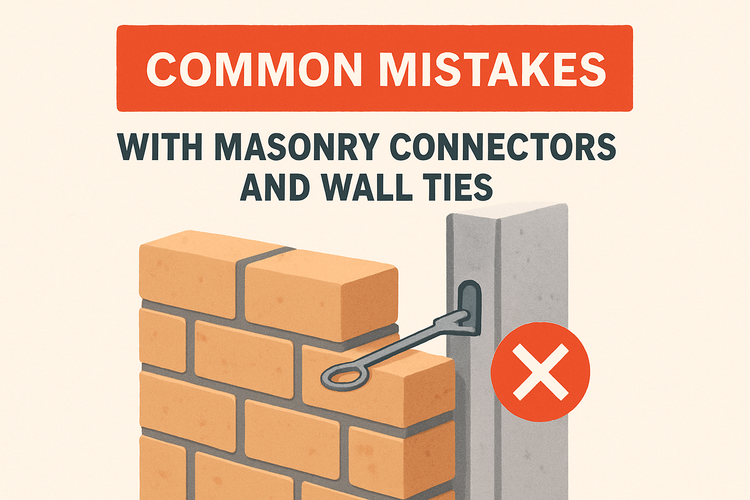Common Mistakes With Masonry Connectors And Wall Ties In Construction

Poor Placement of Wall Ties
One of the most common mistakes made during masonry construction is the improper placement of wall ties. The positioning of these connectors greatly impacts the structural performance of the wall.
Incorrect spacing or alignment of wall ties may lead to weak points within the brickwork, reducing its ability to withstand lateral forces. This could result in bulging or even collapse over time, especially in regions exposed to high wind loads. Ensuring correct horizontal and vertical spacing in accordance with building codes is crucial.
Another issue stems from wall ties being positioned too close to the edges of bricks or blocks, which weakens the masonry at critical junctures. Installers must maintain proper embedment depth and keep ties centrally located within the cavity to distribute loads effectively and prevent cracking or disengagement of the ties from the mortar.
Choosing the Wrong Type of Tie
Different projects demand different types of ties depending on factors like cavity width, expected load, and the type of masonry used. Selecting the wrong type can be detrimental to wall stability.
Builders sometimes use ties designed for light loads in settings where high-strength connectors are necessary, particularly in multi-storey buildings or areas prone to high wind events. This compromises the integrity of the gas barrier and thermal performance of the wall and can result in moisture ingress.
Materials also play a vital role. Using wall ties made of incompatible metals can lead to corrosion due to electrochemical reactions, which degrades the tie and causes long-term structural concerns. Stainless steel is generally preferred for its durability and resistance to corrosion. When choosing the appropriate masonry connectors and wall ties, it's essential to consult manufacturer specifications to ensure compatibility with the brick or blockwork and climatic conditions.
Incorrect Mortar Embedding Techniques
While placing the correct tie is important, embedding it incorrectly into mortar joints can render even the best tie ineffective.
Some installers push ties into the mortar without fully embedding them, leading to poor bonding between the tie and the masonry. It's crucial that each tie is installed with a minimum embedment of 50mm in both inner and outer leaves, with cement properly surrounding the tie to prevent movement.
Allowing mortar to dry before embedding wall ties can also lead to subpar bonding. Best practice involves inserting the wall tie as the mortar is applied, ensuring full encapsulation. Similarly, ties must not be bent on-site unless specified, as it weakens their structural ability. Poor installation practices, while often carried out to save time, can result in costly long-term repairs and compromise building safety.
Ignoring Environmental Exposure Conditions
Environmental factors such as moisture, coastal air, and freeze-thaw cycles should determine construction material choices, including wall ties. Ignoring these elements can lead to failure long after project completion.
In coastal areas, for example, the high salt content in the air accelerates corrosion. Ties made of galvanized steel may corrode quickly, while stainless steel offers better corrosion resistance. Builders who overlook location-specific requirements risk premature aging and reduced safety of structures.
High humidity environments are also prone to damp ingress. Using wrong or insufficient wall ties can create points of failure where moisture bypasses vapour barriers or insulation. Complying with applicable British Standards and choosing weather-appropriate high wind ties & timber connectors ensures durability under harsher conditions.
Failure to Integrate with Other Building Components
Wall ties and masonry connectors do not function in isolation. Failing to coordinate their use with other components like joist hangers or restraint straps can create a weak structural framework.
For instance, when installing joist supports in cavity wall construction, the interaction between joist hangers and wall ties must be considered. If either is misaligned or installed with incompatible materials, it creates stress points and potential failure zones. Proper bracing also depends on restraint straps that tie the structure together horizontally.
Effective builders understand how masonry connectors interface with these essential hardware pieces across load paths. Planning these intersections ahead and selecting products designed to work in tandem allows a seamless structural outcome. Ensuring cohesive integration reduces future complaints and amplifies the lifespan of the build.
